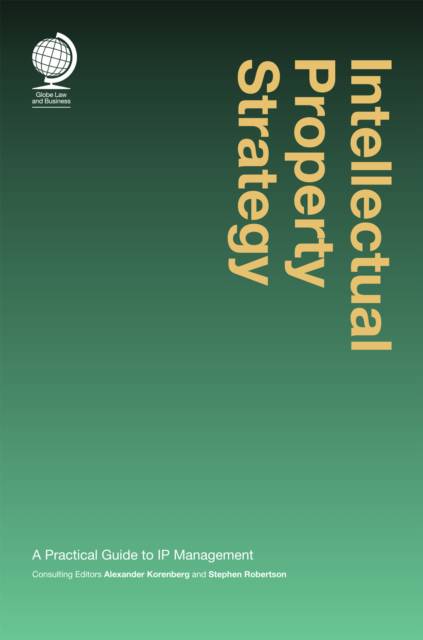
- Afhalen na 1 uur in een winkel met voorraad
- Gratis thuislevering in België vanaf € 30
- Ruim aanbod met 7 miljoen producten
- Afhalen na 1 uur in een winkel met voorraad
- Gratis thuislevering in België vanaf € 30
- Ruim aanbod met 7 miljoen producten
Zoeken
Intellectual Property Strategy
A Practical Guide to IP Management
Alexander Korenberg, Stephen Robertson
Hardcover | Engels
€ 237,45
+ 474 punten
Omschrijving
Over the past three decades, the make-up of the market value of Standard & Poor 500 companies has changed dramatically. While intangible assets amounted to less than one-third of company value in the mid-1980s, this has almost tripled to four-fifths on average today. A large contributor to this trend is intellectual property (IP) - a situation that is even truer for start-up companies, where IP assets may be the only significant asset a company has for quite some time. It is therefore important that company leaders understand the intricacies of IP strategy and how it is an integral part of a successful business strategy. This guide provides a solid grounding in concepts such as IP generation, IP valuation, portfolio management and the monetisation of IP assets, as well as practical guidance on setting an IP strategy and managing the risks associated with third-party intellectual property. For a holistic understanding, less formal IP assets such as trade secrets and brand strategy are covered in addition to patents and trademarks.
Topics are introduced clearly and accessibly to provide decision makers with the necessary background to make informed decisions in cooperation with specialist in-house or external advisers. Chapter features include key pointers, digestible chapter summaries, and helpful diagrams and checklists, as well as case studies to bring theory into sharp practical focus. Whether your company is firmly established or just starting out, this accessible guide is essential reading to facilitate informed decision-making on IP issues. It will also provide those working with intellectual property with a high-level overview of current thinking on IP strategy.
Topics are introduced clearly and accessibly to provide decision makers with the necessary background to make informed decisions in cooperation with specialist in-house or external advisers. Chapter features include key pointers, digestible chapter summaries, and helpful diagrams and checklists, as well as case studies to bring theory into sharp practical focus. Whether your company is firmly established or just starting out, this accessible guide is essential reading to facilitate informed decision-making on IP issues. It will also provide those working with intellectual property with a high-level overview of current thinking on IP strategy.
Specificaties
Betrokkenen
- Auteur(s):
- Uitgeverij:
Inhoud
- Aantal bladzijden:
- 175
- Taal:
- Engels
Eigenschappen
- Productcode (EAN):
- 9781911078074
- Verschijningsdatum:
- 30/06/2017
- Uitvoering:
- Hardcover
- Formaat:
- Genaaid
- Afmetingen:
- 155 mm x 236 mm
- Gewicht:
- 453 g

Alleen bij Standaard Boekhandel
+ 474 punten op je klantenkaart van Standaard Boekhandel
Beoordelingen
We publiceren alleen reviews die voldoen aan de voorwaarden voor reviews. Bekijk onze voorwaarden voor reviews.











